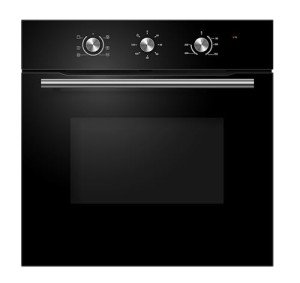The Comprehensive Guide to Built-in Electric Ovens and Hobs
In today's busy world, modern-day kitchen appliances have actually developed significantly to deal with the tastes and requirements of contemporary house owners. Among built in electric single oven and induction hob pack , built-in electric ovens and hobs stand out for their performance, design, and performance. This article checks out the functions, advantages, setup pointers, and upkeep of built-in electric ovens and hobs, together with dealing with often asked concerns.
Understanding Built-in Electric Ovens
What Is a Built-in Electric Oven?
A built-in electric oven is a home appliance developed to be installed into a wall or kitchen cabinets, offering a smooth, integrated look in the kitchen. Unlike freestanding ovens, built-in designs conserve space and frequently come geared up with additional features such as self-cleaning cycles, convection cooking, and different cooking modes.
Types of Built-in Electric Ovens
- Single Ovens: Ideal for smaller kitchen areas or those who cook for less people.
- Double Ovens: Offer more cooking space, suitable for larger families or those who amuse frequently.
- Combination Ovens: These include both a traditional oven and a microwave, providing flexible cooking choices.
Advantages of Built-in Electric Ovens
| Advantage | Description |
|---|---|
| Space-Saving Design | Fits perfectly into cabinets, releasing up counter area. |
| Improved Aesthetics | Produces a contemporary, expert kitchen appearance. |
| Versatile Cooking Options | Frequently features multiple cooking modes including bake, broil, and convection. |
| Energy Efficient | Consumes less energy than conventional ovens. |
Understanding Built-in Hobs
What Is a Built-in Hob?
A built-in hob is a cooking surface area set up into the kitchen countertop, incorporating effortlessly with the kitchen design. Readily available in electric, induction, and gas ranges, electric hobs are renowned for their precision and ease of use.
Kinds Of Built-in Hobs
- Electric Hobs: Traditional coil components that heat via electrical resistance.
- Induction Hobs: Use magnetic energy to heat just the pots and pans, making them much faster and safer.
- Ceramic Hobs: Feature a smooth surface with convected heat underneath, providing easy cleansing.
Advantages of Built-in Hobs
| Benefit | Description |
|---|---|
| Fast Cooking Times | Electric hobs heat quickly, lowering overall cooking time. |
| Easy to Clean | Flat surface permits quick and simple cleansing. |
| Long lasting | Traditionally built to last and endure heats. |
| Versatile Compatibility | Works well with various cookware products. |
Setup Considerations
Installing a built-in electric oven and hob requires mindful preparation.
Steps for Installation
- Procedure the Space: Ensure the dimensions of the oven and hob match the assigned area in your kitchen.
- Inspect Electrical Requirements: Consult an electrical expert to make sure circuitry can handle the device's power requirements.
- Positioning of Appliances: Position the oven at a convenient height, typically between waist and eye level.
- Ventilation: Ensure proper ventilation, particularly if your oven integrates a range hood.
Vital Tools
- Power drill
- Screwdrivers
- Level
- Determining tape
Security Precautions
- Constantly disconnect the power before installation.
- Follow manufacturer instructions thoroughly.
- Think about hiring a professional for electrical connections.
Maintenance Tips
Maintaining built-in electric ovens and hobs is vital for longevity and performance.
Routine Care Routine
- Cleaning up the Surface: Use a soft fabric and manufacturer-recommended cleaner.
- Checking Electrical Connections: Check cables and plug for damages regularly.
- Cleaning Filters: If the oven has a ventilator, tidy or change the filters as needed.
Troubleshooting Common Issues
| Problem | Possible Solution |
|---|---|
| Oven Won't Heat | Check the power supply and heating aspect. |
| Heating Inconsistency | Examine the thermostat and oven calibration. |
| Hob Not Heating | Make sure pots and pans works and inspect the power supply. |
Regularly Asked Questions
1. How do I select the ideal size built-in electric oven?
Choosing the ideal size includes measuring your kitchen area and considering just how much cooking you typically do. If you amuse frequently or have a large family, choose a double oven.
2. Are built-in electric hobs safe to use?
Yes, built-in electric hobs are safe, especially induction hobs which just heat the cookware, minimizing the threat of burns.
3. Can I install a built-in oven and hob myself?
While it is possible for knowledgeable DIY enthusiasts, employing an expert is advised, especially for the electrical connections.
4. How frequently should I clean my built-in oven and hob?
Cleaning ought to be done frequently after usage, with deep cleaning intervals depending on cooking frequency - normally every couple of months.
5. Do built-in appliances require unique upkeep?
Built-in appliances need comparable maintenance to freestanding models, but correct care must be taken with their surrounding kitchen cabinetry.
Built-in electric ovens and hobs present a blend of innovation and design, providing efficiency and contemporary visual appeals to any kitchen. With appropriate selection, mindful installation, and routine maintenance, these appliances can enhance one's cooking experience for lots of years. Comprehending the functions, benefits, and care requirements can empower homeowners to produce the kitchen of their dreams-- effectively and stylishly.
As cooking areas continue to progress into central centers of the home, selecting the right built-in options plays an essential role in day-to-day cooking imagination and satisfaction.

